Related Research Articles
In the mathematical field of geometric topology, the Poincaré conjecture is a theorem about the characterization of the 3-sphere, which is the hypersphere that bounds the unit ball in four-dimensional space.
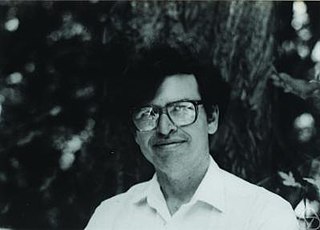
William Paul Thurston was an American mathematician. He was a pioneer in the field of low-dimensional topology and was awarded the Fields Medal in 1982 for his contributions to the study of 3-manifolds.
In mathematics, Thurston's geometrization conjecture states that each of certain three-dimensional topological spaces has a unique geometric structure that can be associated with it. It is an analogue of the uniformization theorem for two-dimensional surfaces, which states that every simply connected Riemann surface can be given one of three geometries . In three dimensions, it is not always possible to assign a single geometry to a whole topological space. Instead, the geometrization conjecture states that every closed 3-manifold can be decomposed in a canonical way into pieces that each have one of eight types of geometric structure. The conjecture was proposed by William Thurston (1982), and implies several other conjectures, such as the Poincaré conjecture and Thurston's elliptization conjecture.
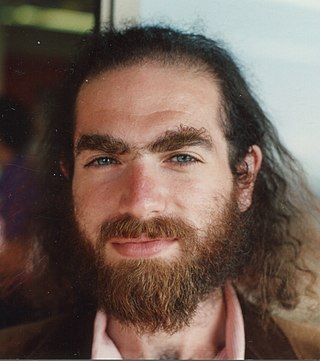
Grigori Yakovlevich Perelman is a Russian mathematician who is known for his contributions to the fields of geometric analysis, Riemannian geometry, and geometric topology. In 2005, Perelman abruptly quit his research job at the Steklov Institute of Mathematics, and in 2006 stated that he had quit professional mathematics, due to feeling disappointed over the ethical standards in the field. He lives in seclusion in Saint Petersburg, and has not accepted offers for interviews since 2006.
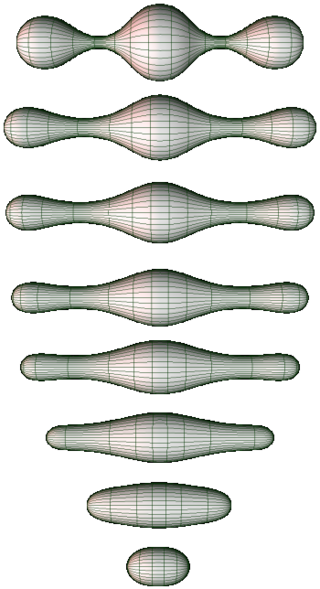
In the mathematical fields of differential geometry and geometric analysis, the Ricci flow, sometimes also referred to as Hamilton's Ricci flow, is a certain partial differential equation for a Riemannian metric. It is often said to be analogous to the diffusion of heat and the heat equation, due to formal similarities in the mathematical structure of the equation. However, it is nonlinear and exhibits many phenomena not present in the study of the heat equation.

Shing-Tung Yau is a Chinese-American mathematician and the William Caspar Graustein Professor of Mathematics at Harvard University. In April 2022, Yau retired from Harvard to become a professor of mathematics at Tsinghua University.

Pierre René, Viscount Deligne is a Belgian mathematician. He is best known for work on the Weil conjectures, leading to a complete proof in 1973. He is the winner of the 2013 Abel Prize, 2008 Wolf Prize, 1988 Crafoord Prize, and 1978 Fields Medal.

Richard Streit Hamilton is an American mathematician who serves as the Davies Professor of Mathematics at Columbia University. He is known for contributions to geometric analysis and partial differential equations. Hamilton is best known for foundational contributions to the theory of the Ricci flow and the development of a corresponding program of techniques and ideas for resolving the Poincaré conjecture and geometrization conjecture in the field of geometric topology. Grigori Perelman built upon Hamilton's results to prove the conjectures, and was awarded a Millennium Prize for his work. However, Perelman declined the award, regarding Hamilton's contribution as being equal to his own.
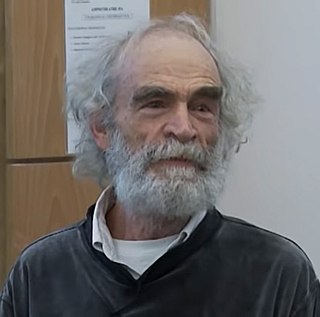
Mikhael Leonidovich Gromov is a Russian-French mathematician known for his work in geometry, analysis and group theory. He is a permanent member of Institut des Hautes Études Scientifiques in France and a professor of mathematics at New York University.
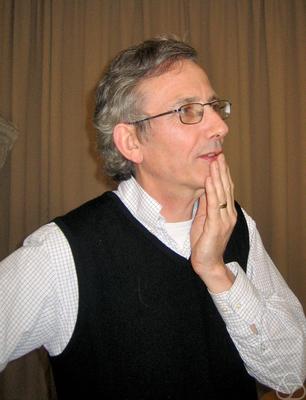
Sir Simon Kirwan Donaldson is an English mathematician known for his work on the topology of smooth (differentiable) four-dimensional manifolds, Donaldson–Thomas theory, and his contributions to Kähler geometry. He is currently a permanent member of the Simons Center for Geometry and Physics at Stony Brook University in New York, and a Professor in Pure Mathematics at Imperial College London.

In mathematics, a 3-manifold is a topological space that locally looks like a three-dimensional Euclidean space. A 3-manifold can be thought of as a possible shape of the universe. Just as a sphere looks like a plane to a small enough observer, all 3-manifolds look like our universe does to a small enough observer. This is made more precise in the definition below.

Phillip Augustus Griffiths IV is an American mathematician, known for his work in the field of geometry, and in particular for the complex manifold approach to algebraic geometry. He is a major developer in particular of the theory of variation of Hodge structure in Hodge theory and moduli theory, which forms part of transcendental algebraic geometry and which also touches upon major and distant areas of differential geometry. He also worked on partial differential equations, coauthored with Shiing-Shen Chern, Robert Bryant and Robert Gardner on Exterior Differential Systems.
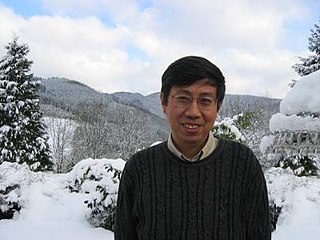
Tian Gang is a Chinese mathematician. He is a professor of mathematics at Peking University and Higgins Professor Emeritus at Princeton University. He is known for contributions to the mathematical fields of Kähler geometry, Gromov-Witten theory, and geometric analysis.
The Oswald Veblen Prize in Geometry is an award granted by the American Mathematical Society for notable research in geometry or topology. It was funded in 1961 in memory of Oswald Veblen and first issued in 1964. The Veblen Prize is now worth US$5000, and is awarded every three years.

Bruce Alan Kleiner is an American mathematician, working in differential geometry and topology and geometric group theory.
Huai-Dong Cao is a Chinese–American mathematician. He is the A. Everett Pitcher Professor of Mathematics at Lehigh University. He is known for his research contributions to the Ricci flow, a topic in the field of geometric analysis.
In the mathematical area of topology, the generalized Poincaré conjecture is a statement that a manifold which is a homotopy sphere is a sphere. More precisely, one fixes a category of manifolds: topological (Top), piecewise linear (PL), or differentiable (Diff). Then the statement is
The Geometry Festival is an annual mathematics conference held in the United States.
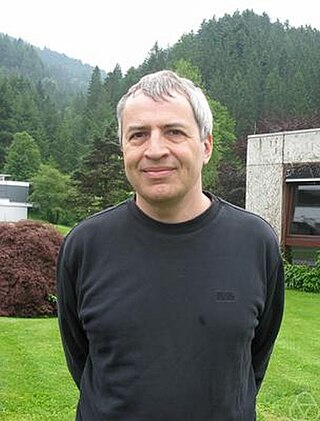
John William Lott is a professor of Mathematics at the University of California, Berkeley. He is known for contributions to differential geometry.
The Millennium Prize Problems are seven well-known complex mathematical problems selected by the Clay Mathematics Institute in 2000. The Clay Institute has pledged a US$1 million prize for the first correct solution to each problem.
References
- 1 2 3 4 5 6 "Biographical Sketch: John Morgan" (PDF). Chinese University of Hong Kong . Retrieved January 27, 2021.
- 1 2 John Morgan at the Mathematics Genealogy Project
- 1 2 3 4 "John Morgan". Simons Center for Geometry and Physics at Stony Brook University . Retrieved January 27, 2021.
- 1 2 3 4 "The Founding Director". Simons Center for Geometry and Physics at Stony Brook University . Retrieved January 27, 2021.
- ↑ List of Fellows of the American Mathematical Society, retrieved 2013-02-10.
- ↑ Dennis Sullivan. Infinitesimal computations in topology. Inst. Hautes Études Sci. Publ. Math. No. 47 (1977), 269–331
- ↑ Pierre Deligne. Théorie de Hodge. II. Inst. Hautes Études Sci. Publ. Math. No. 40 (1971), 5–57.
- ↑ Grisha Perelman. The entropy formula for the Ricci flow and its geometric applications. arXiv : math/0211159
Grisha Perelman. Ricci flow with surgery on three-manifolds. arXiv : math/0303109
Grisha Perelman. Finite extinction time for the solutions to the Ricci flow on certain three-manifolds. arXiv : math/0307245 - ↑ Bruce Kleiner and John Lott. Notes on Perelman's papers. Geom. Topol. 12 (2008), no. 5, 2587–2855.
- ↑ Huai-Dong Cao and Xi-Ping Zhu. A complete proof of the Poincaré and geometrization conjectures—application of the Hamilton-Perelman theory of the Ricci flow. Asian J. Math. 10 (2006), no. 2, 165–492.
- ↑ John Morgan. The Poincaré Conjecture (special lecture). Minute 43:40.
- ↑ Abbas Bahri. Five gaps in mathematics. Adv. Nonlinear Stud. 15 (2015), no. 2, 289–319.
- ↑ Abbas Bahri. A counterexample to the second inequality of Corollary (19.10) in the monograph "Ricci Flow and the Poincare Conjecture" by J.Morgan and G.Tian. arXiv : 1512.02046
- ↑ Chen, Kuo-Tsai (1983). "Review: Rational homotopy theory and differential forms, by P. A. Griffiths and J. W. Morgan". Bull. Amer. Math. Soc. (N.S.). 8 (3): 496–498. doi: 10.1090/s0273-0979-1983-15135-2 .